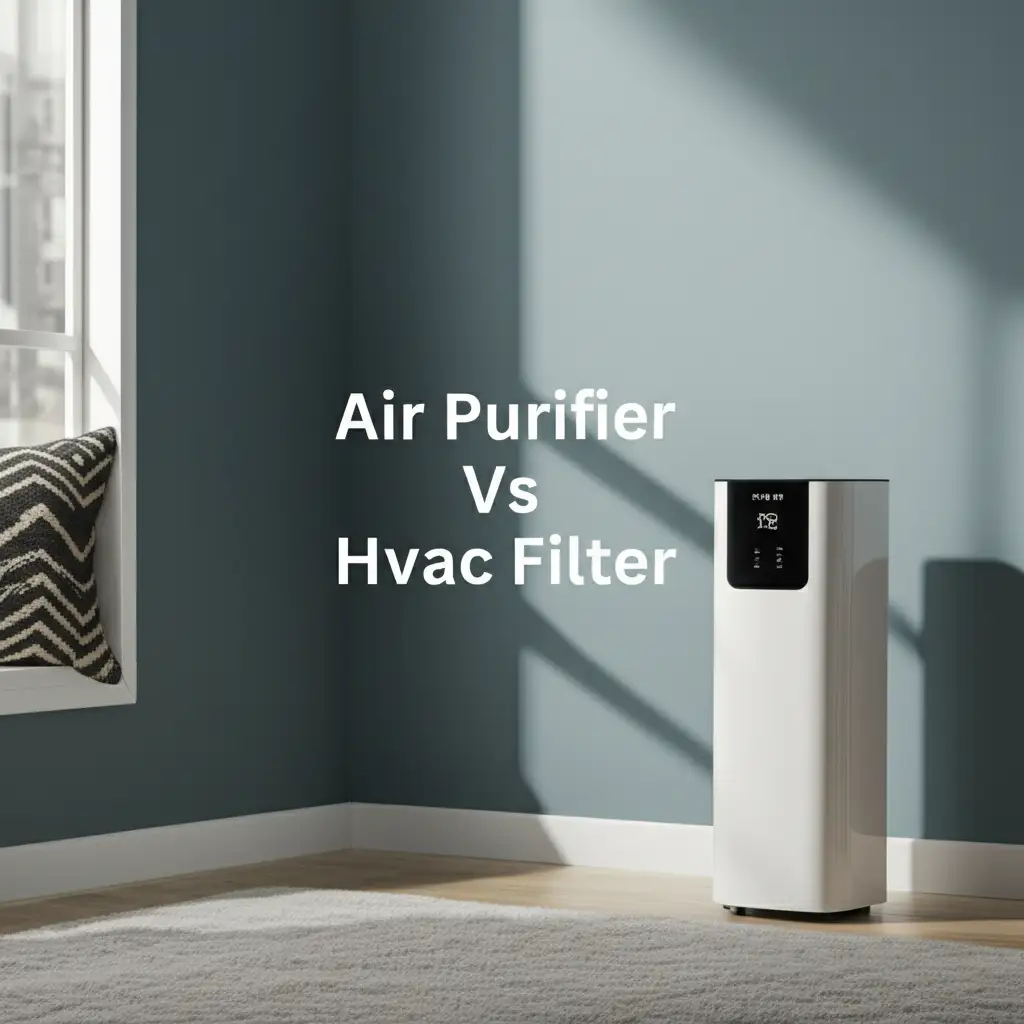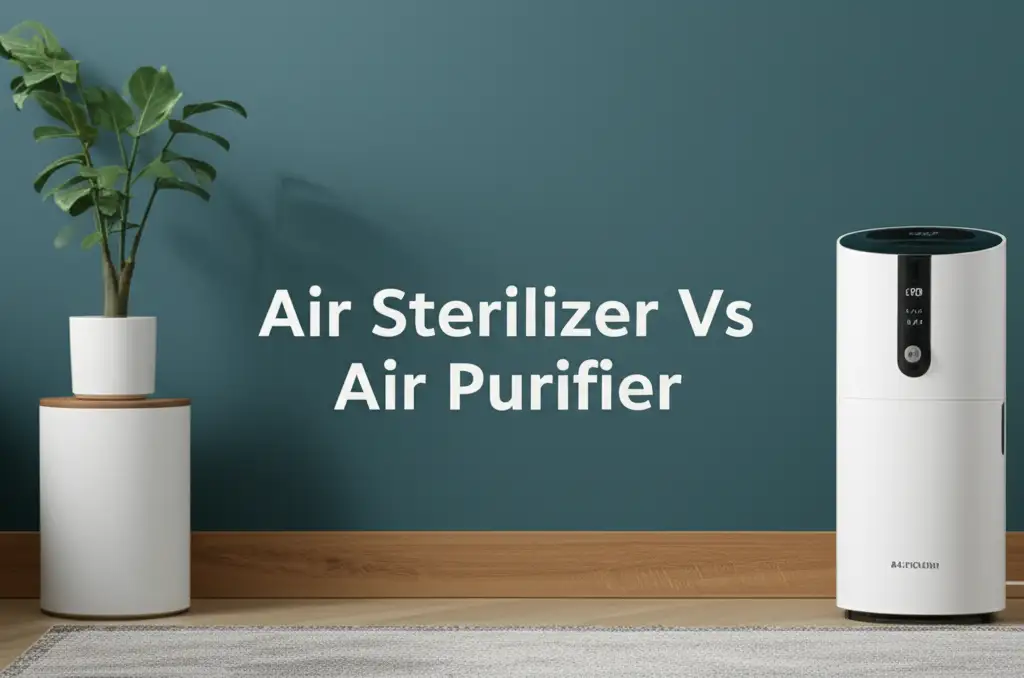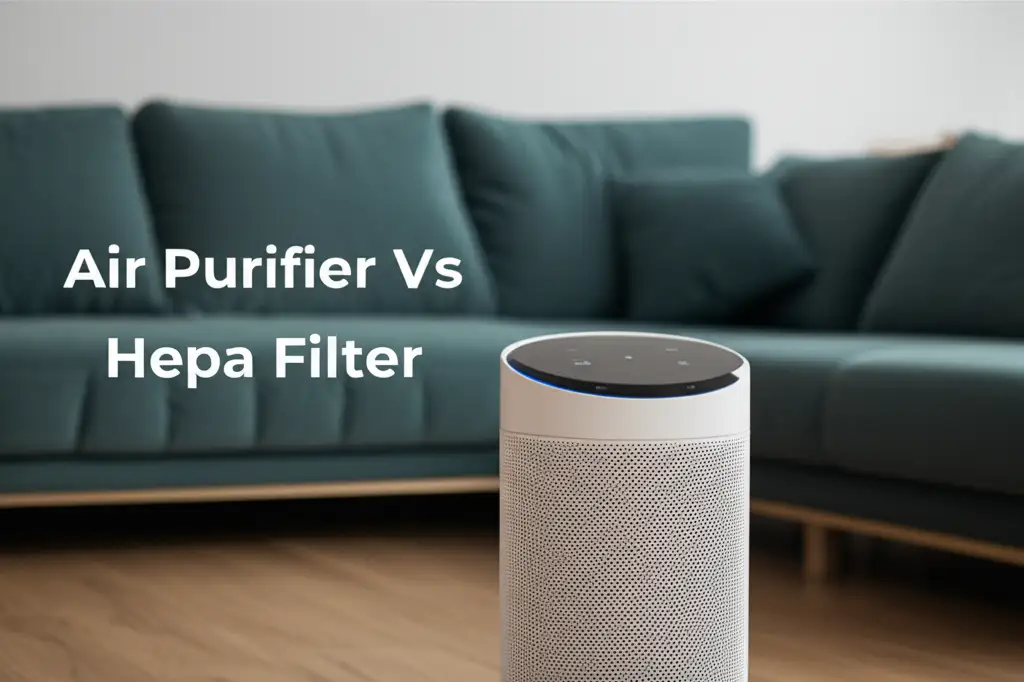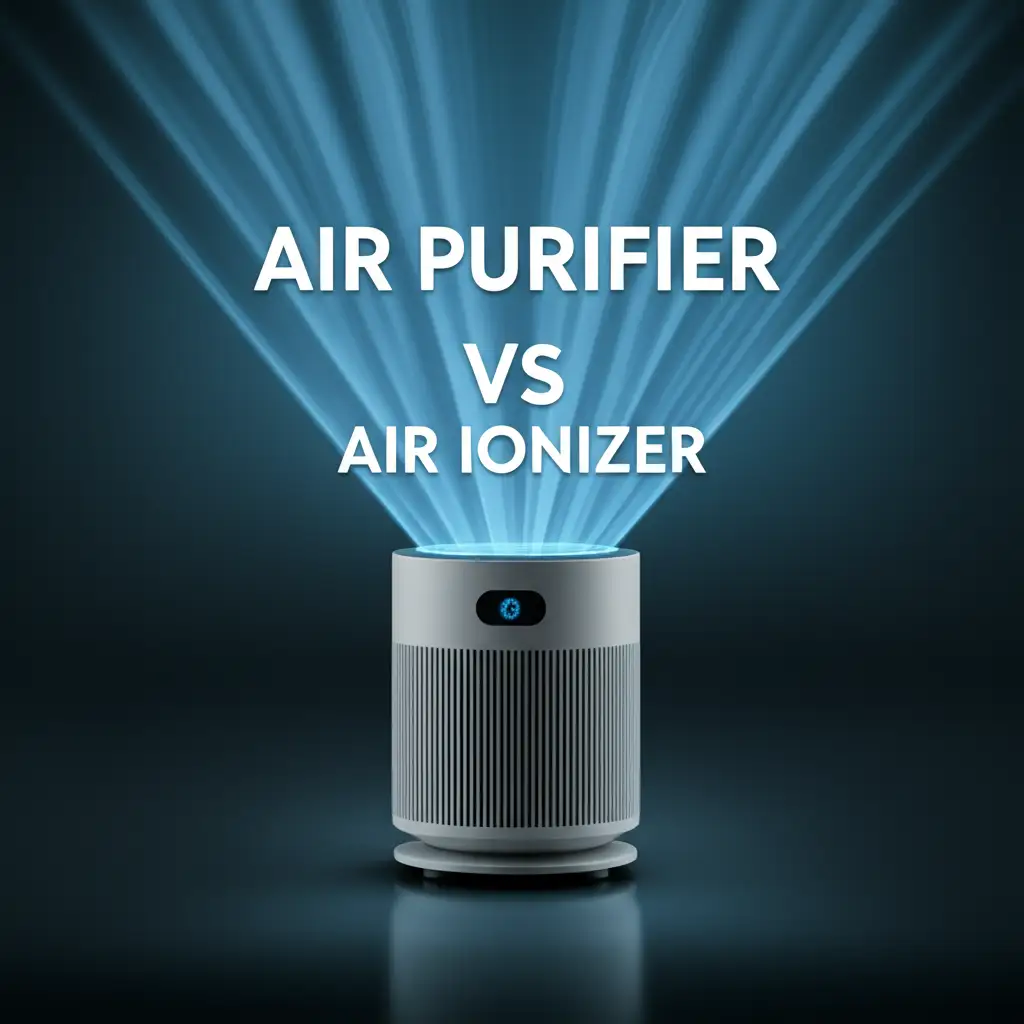· Mason Everett · Home Air Quality · 13 min read
Air Purifier Vs Humidifier For Dust

Air Purifier Vs Humidifier For Dust: Which Is Best?
Stepping into your home, you expect a sanctuary. Yet, often, an unseen enemy lurks: dust. This common household issue does more than just settle on surfaces; it floats in the air we breathe. Many people wonder about the best way to handle airborne dust. Should you get an air purifier, a humidifier, or perhaps both? We understand your confusion.
Today, we will break down the roles of an air purifier vs humidifier for dust control. We will explore how each device works. You will learn about their primary functions and what they do for your indoor air. This article will help you make an informed decision for a cleaner, healthier living space.
Takeaway
- Air Purifiers Filter Dust: These devices actively remove tiny dust particles from the air. They use filters, like HEPA, to trap allergens. This makes air purifiers essential for allergy sufferers.
- Humidifiers Manage Dust: Humidifiers add moisture to the air. This moisture makes airborne dust heavier. Heavier dust settles more quickly, reducing what you breathe.
- Both Have Different Roles: An air purifier cleans the air. A humidifier affects how dust behaves. Neither device completely replaces regular cleaning.
- Consider Your Needs: Choose an air purifier for allergy relief. Choose a humidifier for dry air issues. Use both for a comprehensive approach to dust and comfort.
- Regular Cleaning is Key: No device removes all dust. Vacuuming and dusting remain crucial for a dust-free home.
Clear Answer to the Main Query
An air purifier actively removes dust and airborne particles from the air, making it superior for direct dust elimination and allergy relief. A humidifier manages dust by adding moisture, causing particles to settle faster, but it does not remove them. For optimal dust control, an air purifier is more effective; a humidifier aids in specific dry conditions.
Understanding Household Dust and Its Impact
Dust is a common part of every home. It forms from many sources. These sources include dead skin cells, pet dander, fabric fibers, and outdoor pollutants. These tiny particles settle on surfaces but also float in the air. This airborne dust is what we breathe every day.
Invisible dust particles can cause health problems. They often trigger allergies. Many people experience sneezing, coughing, and itchy eyes because of dust. For those with asthma, dust can worsen symptoms. It is vital to manage dust for good health. We can make our homes healthier by reducing dust. This helps everyone breathe easier.
How Air Purifiers Combat Dust Effectively
Air purifiers are powerful tools against dust. They work by drawing air into the unit. Inside, the air passes through a series of filters. These filters trap tiny particles. The clean air then returns to the room. This process removes dust from the air you breathe.
The most effective air purifiers use HEPA filters. HEPA stands for High-Efficiency Particulate Air. A true HEPA filter captures 99.97% of particles as small as 0.3 microns. This includes dust, pet dander, pollen, and mold spores. Some air purifiers also have activated carbon filters. These filters help remove odors and harmful gases. When you clean your home, remember that air quality helps too. You might want to consider how to clean air vents to maximize airflow and minimize dust accumulation from your HVAC system.
Here are the benefits of using an air purifier for dust:
- Active Removal: Air purifiers actively pull dust out of the air. They do not just settle it. This means the dust is truly gone from circulation.
- Allergy Relief: By removing allergens like dust mites and pollen, air purifiers reduce allergy symptoms. People often find significant relief.
- Improved Air Quality: Beyond dust, purifiers can capture other pollutants. This includes smoke, volatile organic compounds (VOCs), and pet dander.
- Healthier Breathing: Breathing fewer particles improves overall respiratory health. This is especially true for children and the elderly.
I find that running my air purifier makes a noticeable difference. The air feels lighter and fresher. It truly helps if you have pets or live in a dusty area.
How Humidifiers Influence Dust Behavior
Humidifiers add moisture to the air. They release water vapor into the room. This increases the humidity level. When the air is dry, dust particles are light. They float around easily. Adding moisture changes this. The dust particles absorb water. This makes them heavier.
Once dust particles become heavier, they do not float as much. They settle down onto surfaces faster. This means less dust remains suspended in the air. While a humidifier does not remove dust, it makes it easier to clean. The dust is on your furniture, not in your lungs. This is a subtle but important difference in dust management.
Consider these aspects of humidifiers for dust:
- Particle Settling: Increased humidity makes dust settle more quickly. This reduces airborne dust. You might still need to clean your ceiling regularly as dust can accumulate there.
- Reduced Static Cling: Dry air often causes static electricity. Static makes dust cling to surfaces and screens. Humidifiers reduce static, making surfaces less attractive to dust.
- Comfort for Dryness: Humidifiers ease dry skin, sore throats, and dry sinuses. These are common issues in dry indoor environments.
- Not a Filter: A humidifier does not filter or remove dust. It only changes its movement. You will still need to dust and vacuum regularly.
I have noticed my humidifier makes the air feel more comfortable. It also seems like I see fewer floating dust motes when the humidity is just right.
Key Differences: Air Purifiers vs. Humidifiers for Dust Control
Understanding the core functions of each device is vital. An air purifier and a humidifier address different aspects of your indoor environment. They do not perform the same job. One is about removal, the other about moisture.
An air purifier’s main role is filtration. It pulls air in and uses filters to trap airborne particles. This directly removes dust, pollen, pet dander, and other allergens from the air. Think of it as a vacuum cleaner for your air. It actively cleans the air you breathe.
A humidifier’s main role is moisture addition. It puts water vapor into the air. This increases the relative humidity. While this can make dust particles settle faster, it does not remove them from your home. The dust simply moves from the air to your surfaces. You still need to clean those surfaces. For example, knowing how to clean the refrigerator ensures you maintain cleanliness in other parts of your home too, complementing the overall dust management.
Here is a simple comparison:
- Air Purifier:
- Function: Removes airborne particles.
- Target: Dust, allergens, pollutants, odors.
- Mechanism: Filtration (HEPA, carbon).
- Benefit for Dust: Reduces the amount of dust floating in the air.
- Humidifier:
- Function: Adds moisture to the air.
- Target: Dry air, dry skin, static electricity.
- Mechanism: Evaporation, misting.
- Benefit for Dust: Makes dust settle faster, reduces airborne time.
The choice depends on your primary concern. If you have allergies or want cleaner air, an air purifier is your friend. If you suffer from dry air symptoms, a humidifier helps.
When to Choose an Air Purifier for Dust Issues
Choosing an air purifier is wise if you experience certain issues. Its strength lies in actively removing particles. This is great for direct dust elimination. It addresses the root cause of floating dust.
You should consider an air purifier if:
- You Suffer from Allergies or Asthma: Air purifiers with HEPA filters capture common allergens. This includes dust mites, pollen, pet dander, and mold spores. Removing these airborne triggers can significantly reduce symptoms.
- You Have Pets: Pet dander is a major source of dust and allergens. An air purifier helps control this. It keeps the air clearer and fresher.
- You Live in a Dusty Environment: If your home naturally collects a lot of dust, an air purifier helps. It constantly cleans the air. This reduces the overall dust load.
- You Want to Improve General Air Quality: Beyond dust, purifiers can remove smoke, volatile organic compounds, and other airborne pollutants. This leads to healthier indoor air for everyone.
- You Notice Visible Dust Floating in Sunlight: This is a clear sign that many particles are suspended in your air. An air purifier can dramatically reduce this.
I remember when my allergies were terrible, and after getting an air purifier, I felt a noticeable difference in my breathing within days. It was truly a game-changer for my comfort.
When to Choose a Humidifier for Dust-Related Concerns
While not a direct dust remover, a humidifier plays a supportive role. It is especially useful in specific situations. Its benefit comes from altering dust behavior, not eliminating it.
You should consider a humidifier if:
- You Live in a Dry Climate or During Winter Months: Low humidity causes dry air. This can lead to dry skin, cracked lips, and static electricity. A humidifier adds much-needed moisture.
- You Experience Frequent Nosebleeds or Dry Sinuses: Dry air irritates nasal passages. A humidifier can soothe these symptoms. It brings moisture back into the air.
- You Notice Excessive Static Electricity: Static makes dust cling to surfaces and can be uncomfortable. Proper humidity levels reduce static cling. This makes dusting easier.
- You Have Wood Furniture or Plants That Suffer in Dry Air: Low humidity can damage wood furniture. It can also harm certain houseplants. Humidifiers protect these items by maintaining moisture.
- Your Primary Dust Concern is Settling: If you prefer dust to settle quickly so you can clean it, a humidifier helps. It makes airborne particles heavier. This allows them to land on surfaces faster for removal.
My personal experience shows that during winter, a humidifier prevents that dry, scratchy feeling in my throat. It also makes the air feel much softer and more comfortable. Plus, it seems to keep the dust from swirling around quite as much before it settles.
The Combined Approach: Optimal Dust Control with Both Devices
For the most comprehensive dust control, using both an air purifier and a humidifier offers significant advantages. They tackle dust from different angles. One cleans, the other influences. Together, they create a superior indoor environment.
An air purifier continuously filters airborne particles. This means fewer dust particles are floating around. It reduces your exposure to allergens and pollutants directly. Meanwhile, a humidifier ensures the air is not too dry. This helps any remaining dust settle faster. It also provides comfort for your skin and respiratory system.
Here is how they complement each other:
- Active Removal + Passive Settling: The purifier removes the majority of airborne dust. The humidifier helps remaining fine particles settle quickly. This leaves less dust available to breathe.
- Allergy Relief + Respiratory Comfort: The purifier reduces allergens. The humidifier prevents dry air symptoms. This dual action supports overall respiratory health.
- Year-Round Benefits: Use the air purifier year-round for continuous air cleaning. Use the humidifier during dry seasons (often winter) or in dry climates. This provides tailored support.
When using both, place them strategically. Keep the air purifier in the main living areas or bedrooms. Place the humidifier where dry air is most problematic. Ensure proper maintenance for both units. This includes cleaning humidifier tanks and changing air purifier filters regularly.
I have found that this combined approach truly elevates the comfort level in my home. The air feels both clean and pleasant, a perfect balance. It is also important to remember that cleanliness extends to areas like your carpets, and knowing how to clean carpet stains pets can also help reduce overall dust in your home environment.
Beyond Devices: Comprehensive Dust Management Strategies
While air purifiers and humidifiers are helpful, they are not magic wands. Effective dust control requires a holistic approach. Regular cleaning habits are essential. These habits complement the work of your devices. They ensure dust is truly removed from your home.
Think of it as a multi-layered defense system against dust. Each step plays a vital role. You must remove settled dust and prevent new dust buildup. A truly clean home environment is about consistent effort.
Here are key strategies for comprehensive dust management:
- Regular Dusting with Microfiber Cloths: Microfiber traps dust effectively. Dampen the cloth slightly to prevent dust from scattering. Dust surfaces weekly.
- Frequent Vacuuming: Use a vacuum cleaner with a HEPA filter. Vacuum carpets, rugs, and upholstery at least once or twice a week. Dust accumulates heavily in carpets.
- Launder Bedding Regularly: Wash sheets, pillowcases, and blankets in hot water weekly. This kills dust mites.
- Clean Curtains and Blinds: These collect significant dust. Vacuum or wash them periodically.
- Maintain HVAC Filters: Change or clean your furnace and air conditioning filters monthly. This improves air quality and system efficiency.
- Declutter Your Home: Fewer items mean fewer places for dust to settle. Clear surfaces.
- Control Pet Dander: Bathe and brush pets regularly. Consider keeping them out of bedrooms if allergies are severe.
- Improve Ventilation: Open windows periodically to air out your home. This helps refresh indoor air. A good overall approach to cleanliness can also help you feel better, inside and out. Learning how to look and feel clean is not just about personal hygiene but also about having a clean living space.
Implementing these practices alongside your chosen devices will dramatically reduce dust. You will create a healthier, more comfortable living space.
FAQ Section
Q1: Can a humidifier make dust worse if not cleaned regularly? A: Yes, definitely. A dirty humidifier can release mold spores and bacteria into the air. This adds to indoor pollutants. Always clean your humidifier according to the manufacturer’s instructions. Use distilled water to prevent mineral buildup and white dust. Regular maintenance prevents it from becoming a source of new airborne particles.
Q2: How often should I change air purifier filters for dust control? A: Filter replacement frequency depends on usage and air quality. Generally, HEPA filters last 6-12 months. Pre-filters might need cleaning every 2-4 weeks. Activated carbon filters often last 3-6 months. Always check your specific air purifier’s manual. Timely changes ensure optimal performance.
Q3: Is it possible to have too much humidity in a home? A: Yes, absolutely. High humidity levels (above 60%) promote mold and mildew growth. This can damage your home and trigger health issues. High humidity can also attract dust mites. Use a hygrometer to monitor indoor humidity. Aim for levels between 30% and 50%.
Q4: Do plants help reduce dust in the air? A: Plants can slightly improve air quality by absorbing some pollutants. They do not significantly reduce dust particles. While plants release oxygen and add humidity, their impact on airborne dust is minimal. They are great for aesthetics and mood, but not a primary dust solution.
Q5: Should I run an air purifier all the time? A: Running an air purifier continuously is generally recommended. This ensures constant air circulation and filtration. If energy consumption is a concern, run it during peak dust times. This includes when you are home, sleeping, or performing dusty activities. Most modern purifiers are energy-efficient.
Q6: What micron size of dust does a HEPA filter capture? A: A true HEPA filter captures 99.97% of particles that are 0.3 microns in size. This specific size is called the Most Penetrating Particle Size (MPPS). HEPA filters are also very effective at trapping larger and smaller particles. This makes them highly efficient for dust, pollen, and pet dander.
Conclusion
Tackling household dust effectively means understanding your tools. An air purifier actively removes “Air Purifier Vs Humidifier For Dust” from the air. It does this through advanced filtration. This makes it an ideal choice for allergy sufferers and anyone wanting cleaner breathing air. A humidifier, however, manages dust by adding moisture. This causes particles to settle faster. It also brings comfort to dry environments.
For a truly dust-controlled home, considering both devices is often the best strategy. They offer different yet complementary benefits. Remember, these devices enhance your efforts, but they do not replace good old-fashioned cleaning. Embrace regular dusting, vacuuming, and smart maintenance. Your respiratory health and home comfort depend on it. Invest in a cleaner home environment today for a healthier tomorrow.





